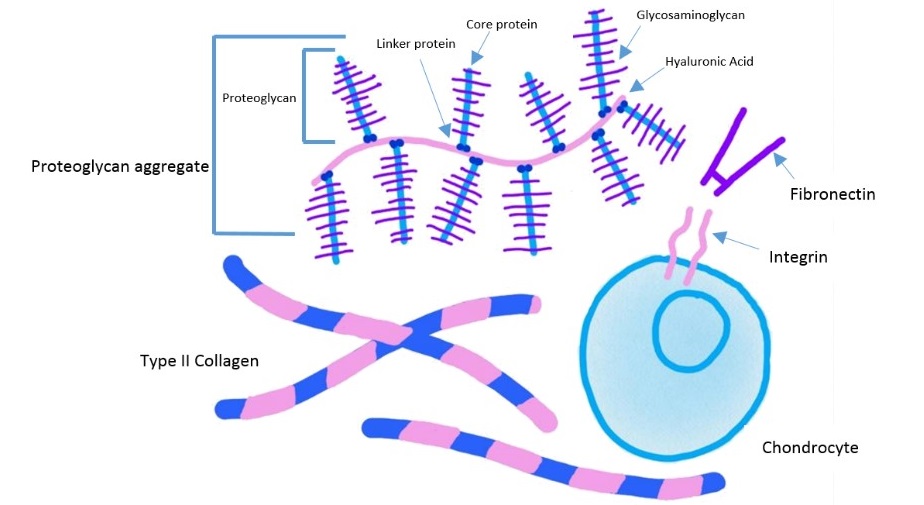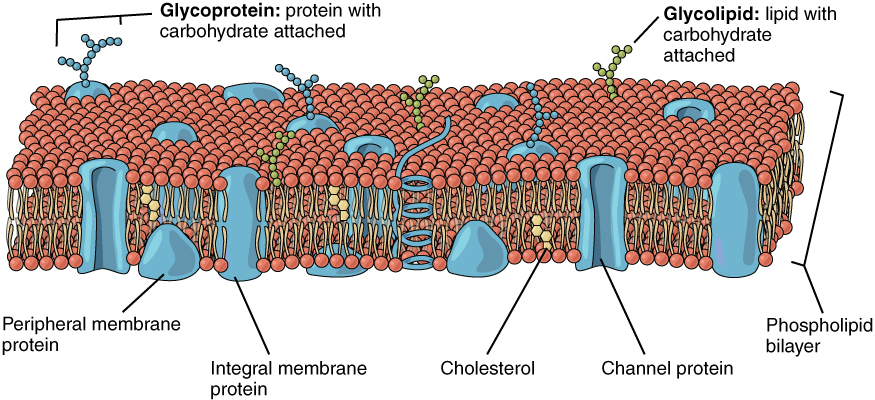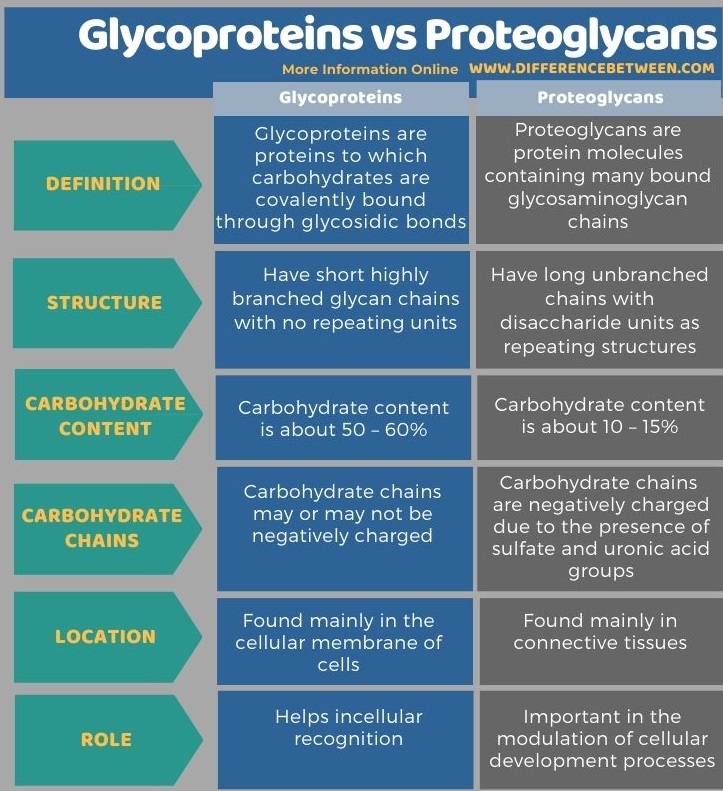Difference Between Proteoglycansand Glycoproteins | Compare the Difference Between Similar Terms
The key difference between proteoglycans and glycoproteins is that the proteoglycans have long unbranched chains with disaccharide units as repeating structures while the glycoproteins have short highly branched glycan chains with no repeating units.
Glycoproteins and proteoglycans are two types of molecules that contain both proteins and carbohydrate units. The carbohydrate units are bound covalently to proteins molecules, varying in size from monosaccharides to polysaccharides.
CONTENTS
1. Overview and Key Difference
2. What are Proteoglycans
3. What are Glycoproteins
4. Side by Side Comparison – Proteoglycans vs Glycoproteins in Tabular Form
5. Summary
What are Proteoglycans?
Proteoglycans are composed of a protein core with one or more covalently attached glycosaminoglycan (GAG) chains. The connective tissues have pProteoglycans, and they contribute to the organization and the physical properties of the extracellular matrix. Based on the nature of the glycosaminoglycan chain, proteoglycans can be divided into several categories, including chondroitin sulfate/ demean sulfate, heparin sulfate, chondroitin sulfate, and keratan sulfate. Proteoglycans can also be divided based on their size as small and large proteoglycans.

Figure 01: Extracellular Matrix Components of Cartilage
What are Glycoproteins?
Glycoproteins are proteins to which carbohydrates are covalently bound through glycosidic bonds. Glycoproteins are commonly found in the body and are an important part of the membranes and Golgi apparatus in cells. In addition to that, they also serve as the cellular recognition molecules such as receptors, adhesion molecules, etc.

Figure 02: Glycoproteins in the Cell Membrane
The two types of glycosylation are N-glycosylation and O-glycosylation. The principle carbohydrates in human glycoproteins are glucose, mannose, fucose, acetylgalactosamine, acetylglucosamine, acetyleuraminic acid, and xylose. Some hormones are also considered as glycoproteins, for example; FSH, LH, TSH, EPO, etc.
What is the Difference Between Proteoglycans and Glycoproteins?
Proteoglycans are considered as a subclass of glycoproteins. The key difference between proteoglycans and glycoproteins is that the glycoproteins have short highly branched glycan chains with no repeating units while the proteoglycans have long unbranched chains with disaccharide units as repeating structures. Moreover, the carbohydrate content of proteoglycans is about 10 – 15%, whereas that of glycoproteins is 50 – 60% by weight.
Furthermore, the glycoproteins are found mainly in the cellular membrane of cells while the proteoglycans are found mainly in connective tissues. Concerning the functions, the difference between proteoglycans and glycoproteins is that the proteoglycans are important in the modulation of cellular development processes, whereas the glycoproteins function in cellular recognition.
The following infographic tabulates the differences between proteoglycans and glycoproteins for side by side comparison.

Summary – Proteoglycans vs Glycoproteins
Glycoproteins and proteoglycans are two types of molecules that contain both proteins and carbohydrate units. Proteoglycans are considered as a subclass of glycoproteins. Glycoproteins have short highly branched glycan chains with no repeating units while proteoglycans have long unbranched chains with disaccharide units as repeating structures. Moreover, the carbohydrate content of proteoglycans is about 10 – 15%, whereas the carbohydrate content of glycoproteins is 50 – 60% by weight. Thus, this is the summary of the difference between proteoglycans and glycoproteins.
Image Courtesy:
1. “Extracellular Matrix Components of Cartilage” By Kassidy Veasaw – Own work (CC BY-SA 4.0) via Commons Wikimedia
2. “0303 Lipid Bilayer With Various Components” By OpenStax – (CC BY 4.0) via Commons Wikimedia
ncG1vNJzZmivp6x7pbXFn5yrnZ6YsqOx07CcnqZemLyue8OinZ%2Bdopq7pLGMm5ytr5Wau2680airnqeXocakrc2sXHxqVXZ9orrDZp6lsZOkvbO7056gp6tf